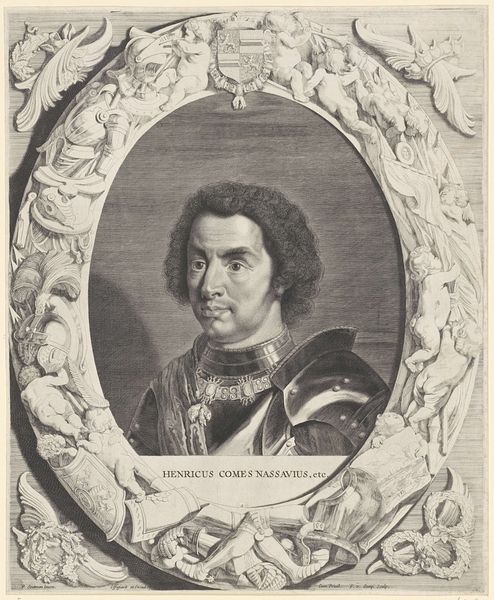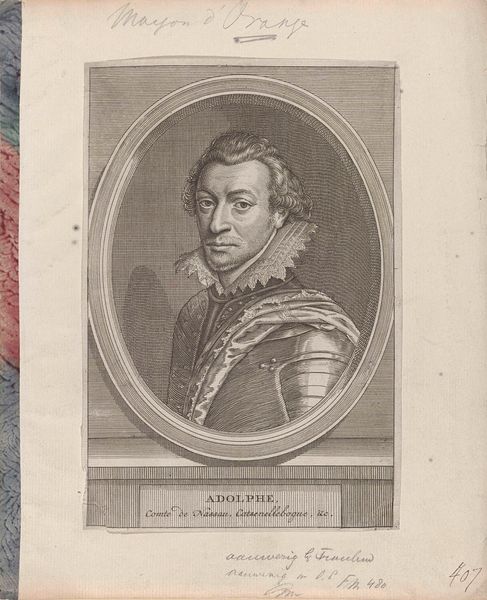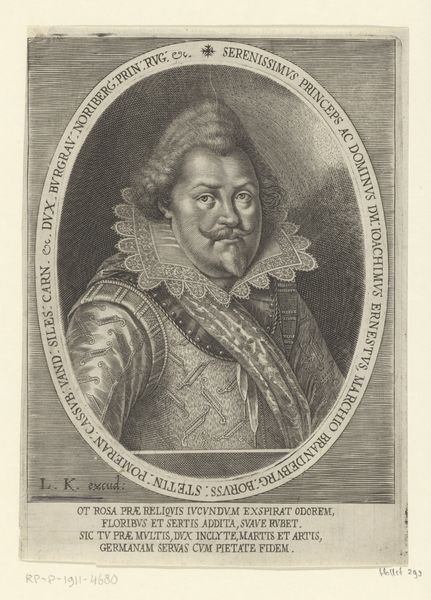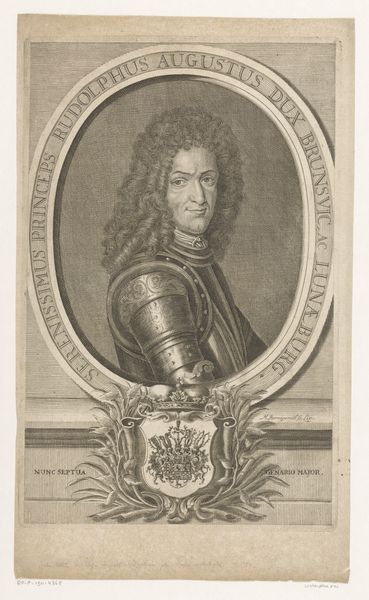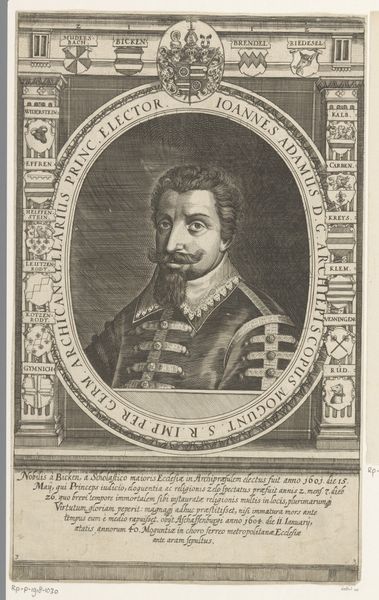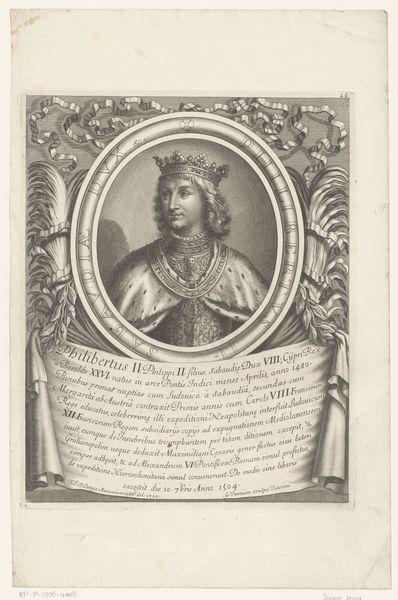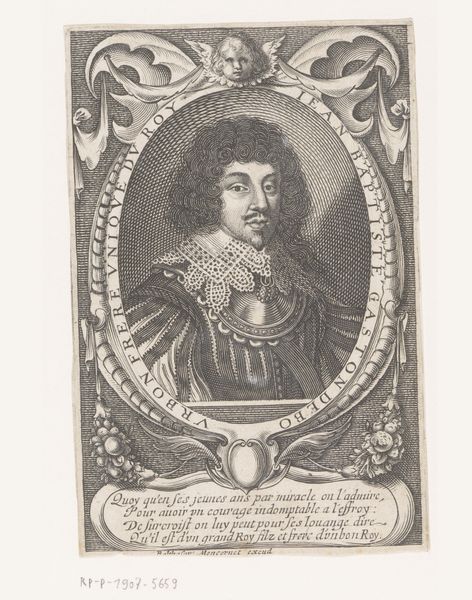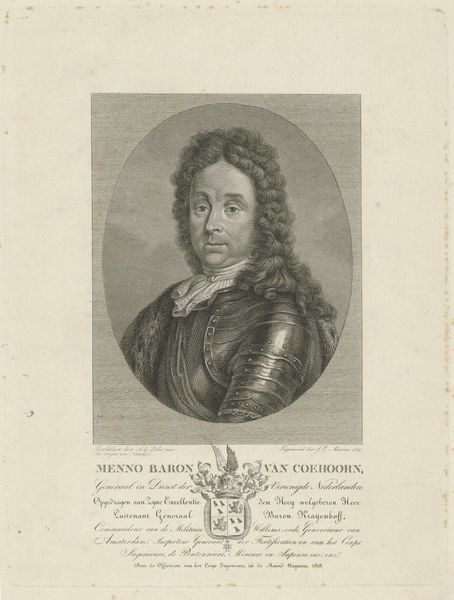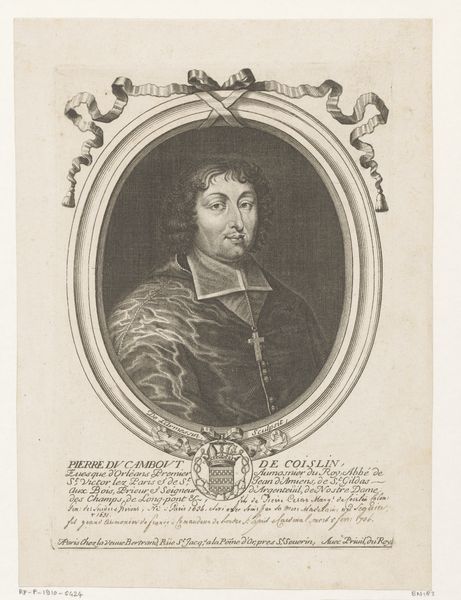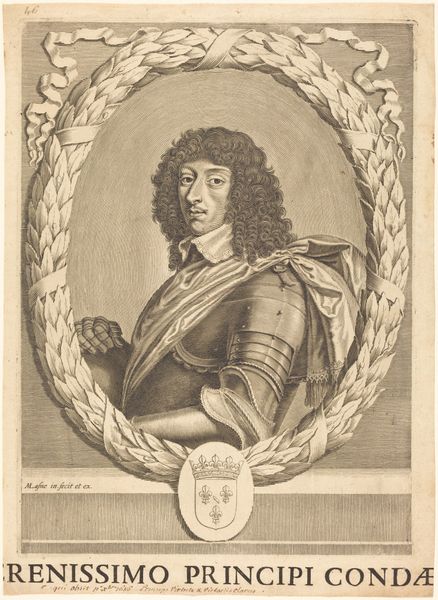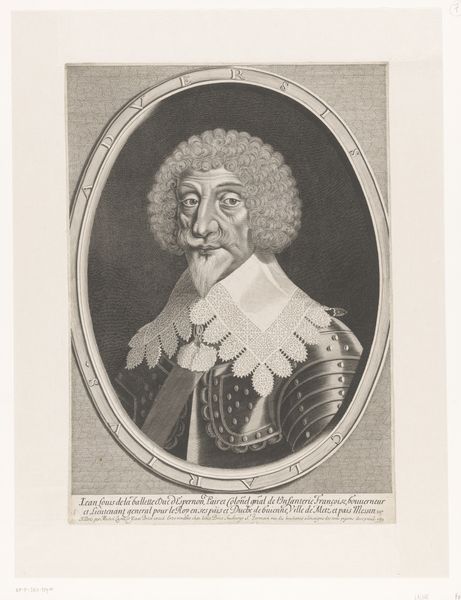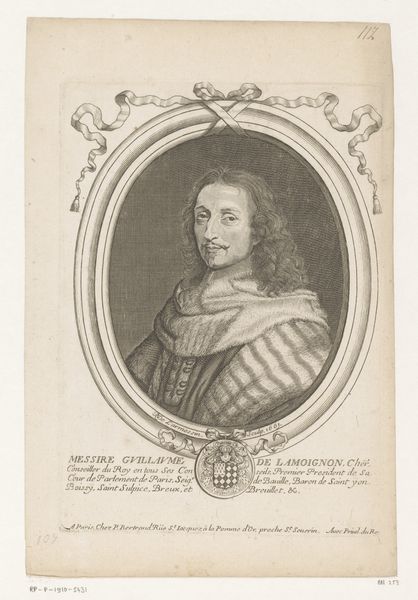
print, engraving
#
portrait
#
baroque
# print
#
old engraving style
#
history-painting
#
engraving
Dimensions: height 462 mm, width 348 mm
Copyright: Rijks Museum: Open Domain
Curator: This engraving, created in 1689 by Pieter van Sompel, portrays Hendrik III, Count of Nassau-Breda. It is currently held in the collection of the Rijksmuseum. Editor: My immediate response is a sense of formality and restraint. The ornate oval frame coupled with Hendrik's armored presence speaks to a particular historical moment and the rigid social structures that governed it. Curator: Indeed. Looking closer at Hendrik III, the depiction aligns with the Baroque portrait tradition, designed to communicate power and lineage. The intricate detail afforded by the engraving highlights not just his physical appearance, but also the gravity of his noble status. What can you tell me about those visual cues? Editor: Well, armor almost always suggests strength, duty, preparedness. In this case, the meticulous etching creates a polished effect; and while his gaze seems steady, there’s a slightly melancholy aura about his eyes. It hints at the psychological burdens carried by those in positions of leadership. His title "Henricus Comes Nassavius" further emphasizes his place within a long line of aristocratic power, suggesting themes of heritage, duty and expectations. Curator: Precisely! These portraits also functioned within broader power dynamics. As a ruler of Breda, Hendrik was enmeshed in religious and political struggles, and in a time when Protestantism faced resistance from established Catholic authorities, representation and lineage become vital. Do you think, even in the rendering, that that struggle is highlighted by the artist? Editor: Perhaps the almost severe ornamentation—that rather heavy wreath surrounding the portrait—is hinting to those exterior political constraints and inner struggles that would accompany a man with this specific place in history. This density almost contrasts with the slightly weary gaze he has. It definitely feels loaded, wouldn’t you agree? Curator: Yes, certainly! As modern viewers, grappling with historical contexts helps us see such figures less as static icons and more as individuals shaped by larger cultural, political, and religious forces. Editor: Absolutely, understanding these symbols allows us to re-animate historical figures; the visual and cultural language helps make this experience richer and allows for new perspectives.
Comments
No comments
Be the first to comment and join the conversation on the ultimate creative platform.
